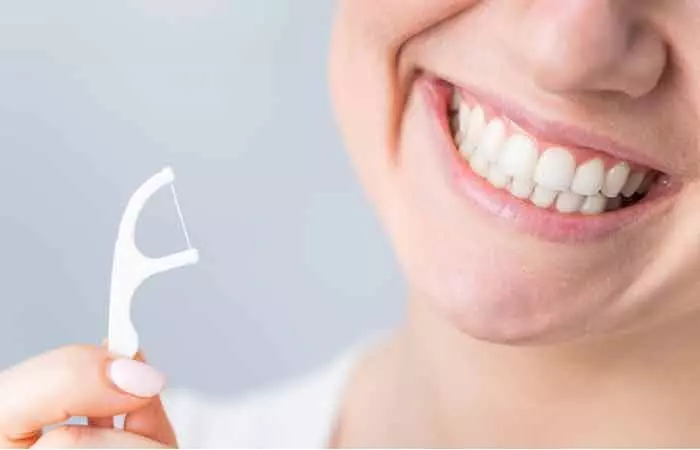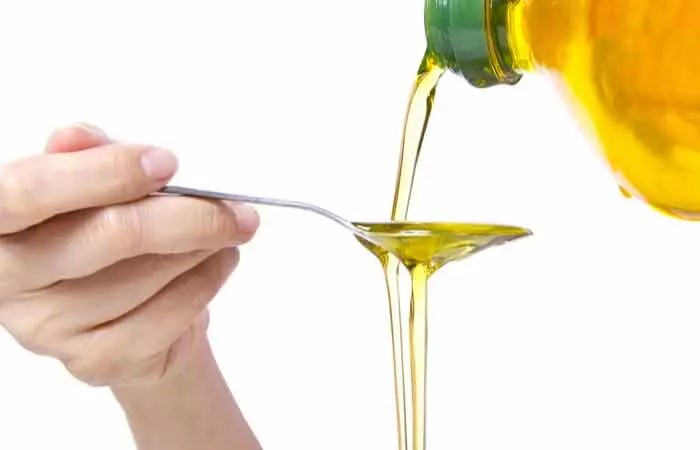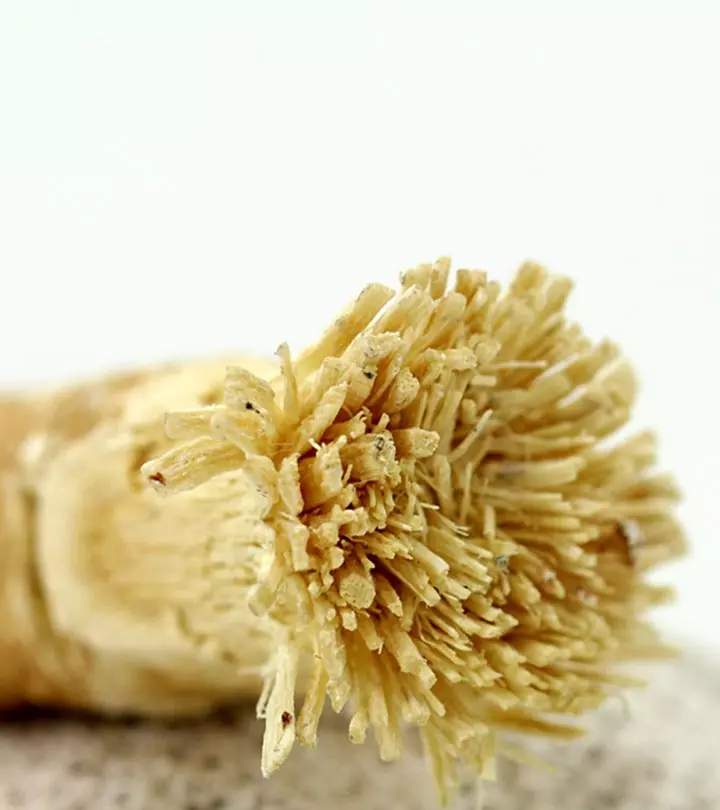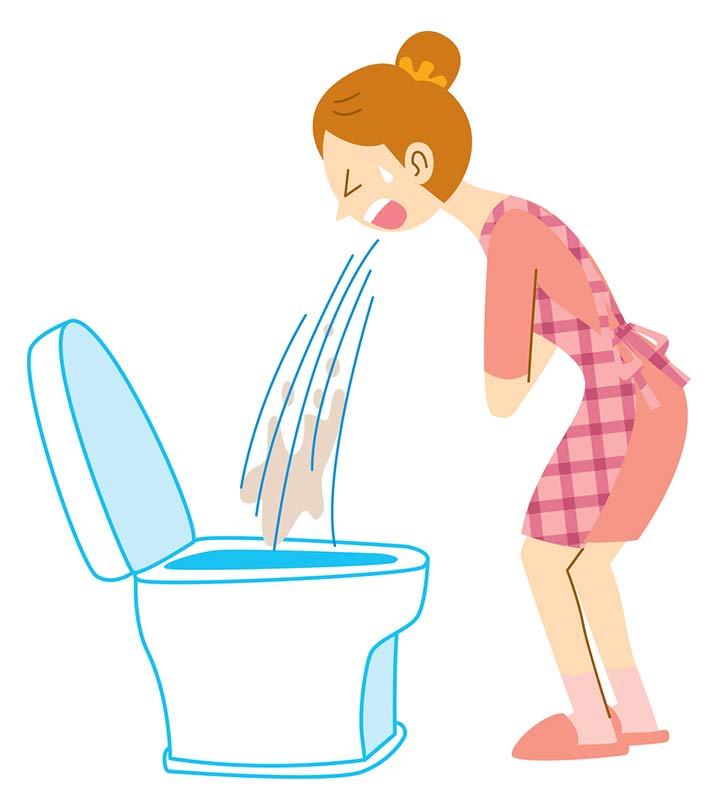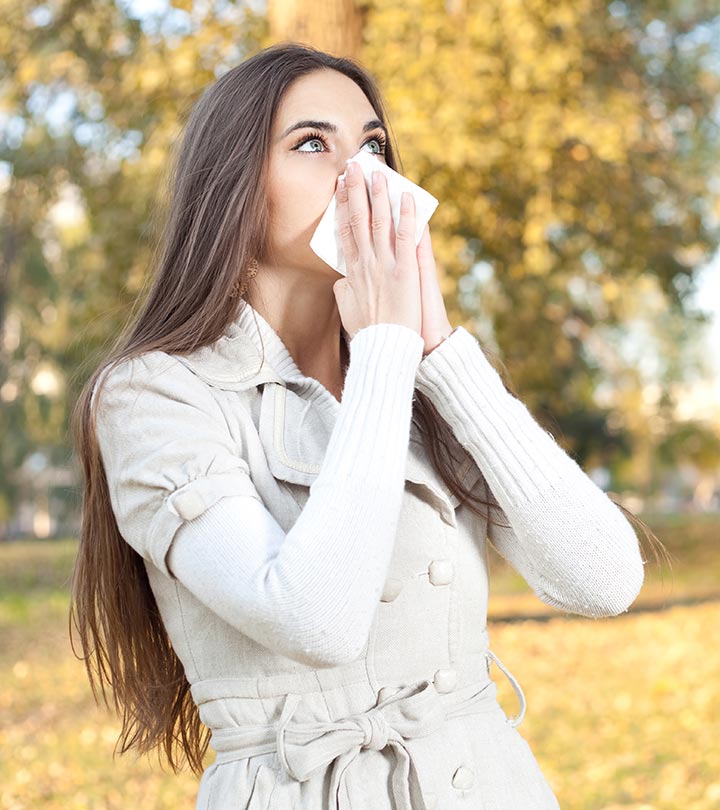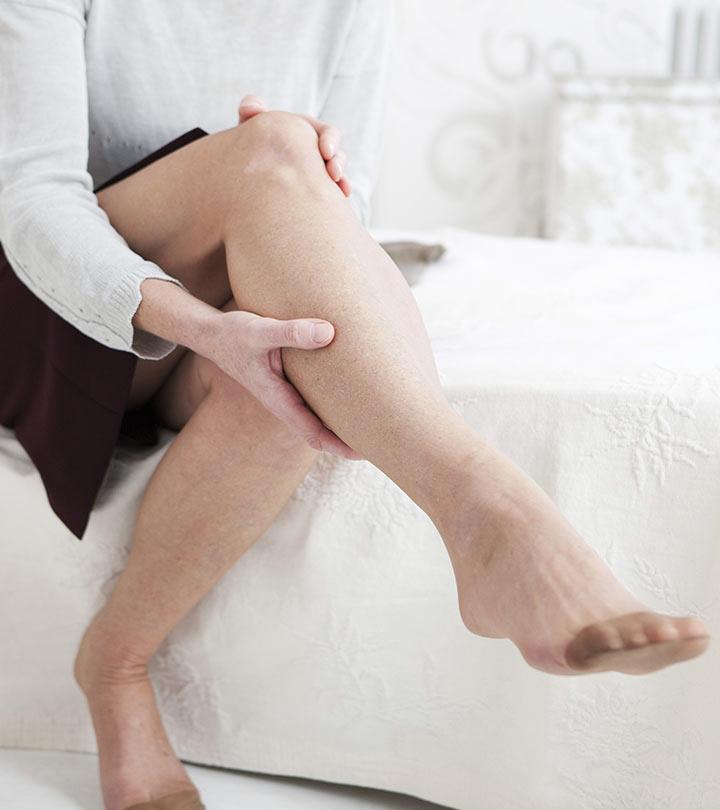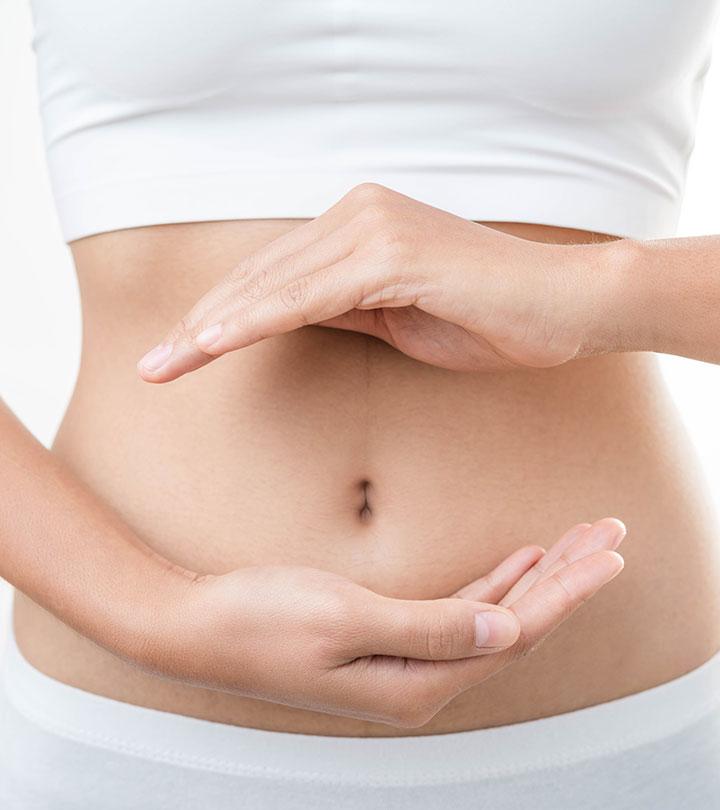12 Natural Ways To Get Rid Of Tartar & Plaque From Teeth
Learn how to remove the tooth buildup at home to avoid a dentist visit and complications.

Image: Shutterstock
Plaque can form due to improper or insufficient brushing, and if left untreated, it transforms and hardens into dental calculus or tartar. Tartar can build up on your teeth in a couple of months due to simple neglect. Plaque and tartar buildup can lead to various other dental and gum disorders, including cavities and tooth decay. To get rid of tartar and plaque without visiting a dentist, you need to apply certain home remedies while following proper oral hygiene.
This post discusses some practical techniques that you can follow to free your teeth of buildup and restore good oral health.
In This Article
Natural Ways To Remove Tartar And Plaque From Teeth
1. Brush Your Teeth Properly
Brushing your teeth properly after every meal prevents the formation of tartar.
A study conducted on 4,218 adults in Great Britain found that 64% of them brush their teeth twice a day and 27% of them brush once a day. It was also observed that 69% of females and 59% of males wash their teeth twice a day compared to 5% of females and 4% of males who wash their teeth thrice a day or more.
Use a soft-bristled toothbrush for brushing, and brush at all angles over all the teeth surfaces so that they are thoroughly cleaned. Remember to always hold the brush at a 45-degree angle to the gum line.
2. Use Fluoride Toothpaste
Fluoride toothpaste helps increase the concentration of fluoride in the teeth, which strengthens them and prevents dental cavities. Using fluoride toothpaste helps to remineralize the areas affected by decay and protects them from the bacteria responsible for tartar formation (1).
You Will Need
A fluoride toothpaste
What You Have To Do
Take a sufficient amount of fluoride toothpaste on your toothbrush and brush your teeth diligently.
How Often Should You Do This
Do this at least twice a day.
3. Tartar Control Toothpaste
Tartar control toothpaste contains chemical ingredients, such as pyrophosphates, zinc citrate, fluoride, etc. These ingredients prevent the build-up of tartar and have an anticaries effect on your teeth (2). Some tartar-control toothpaste is also found to contain an antibiotic called triclosan that is responsible for killing certain oral bacteria (3).
You Will Need
A tartar control toothpaste
What You Have To Do
Brush your teeth with a tartar control toothpaste.
How Often Should You Do This
Do this at least twice a day.
4. Baking Soda Mixture
Baking soda soothes the teeth and gums and exerts an antibacterial effect on plaque and tartar (4). This could help in preventing tartar and whitening your teeth.
You Will Need
- 1 tablespoon baking soda
- A pinch of salt
- Toothbrush
What You Have To Do
- Mix the baking soda and salt and scrub your teeth with this mixture using a toothbrush.
- Rinse your mouth with lukewarm water.
How Often You Should Do This
Use this every alternate day for quick results. Once the plaque is cleared, you can continue using this remedy once every 7-10 days.
Aerica Lee, a YouTuber, talks about how she removes tartar and plaque at home naturally. She used a mixture of baking soda and diluted hydrogen peroxide to scrub the teeth to loosen and break the tartar. She states, “I have been doing this every single day in the morning, I actually saw immediate results, I actually had some tartar break off… so then, the next couple of times I used it, I saw even better phenomenal results because I had already loosened up some of the tartar.” She also advises to be careful using baking soda as it is abrasive, “Go slow, take your time, if you have any issues, stop using it immediately (i).”
5. Aloe Vera Gel
Aloe vera possesses antimicrobial properties and contains antioxidants that can fasten the healing of the gums by scavenging the free radicals produced by the bacteria (5). Lemon essential oil possesses antifungal properties against C. albicans,fungi that are found on our skin and certain parts of the body (6). This can help prevent tartar and caries.
You Will Need
- 1 teaspoon aloe vera gel
- 4 teaspoons vegetable glycerine
- 4-5 tablespoons baking soda
- 10 drops lemon essential oil
- 1 cup of water
What You Have To Do
- Mix all the ingredients to form a smooth paste.
- Scrub your teeth with this mixture.
- Rinse your mouth thoroughly to remove the paste.
How Often You Should Do This
Use it once in 3-4 days until the plaque is completely gone.
Note: Do not use this remedy for a long period as glycerine can interrupt the remineralization process of your teeth.
 Quick Tip
Quick Tip6. Sesame Seed Oil
Sesame oil is rich in bioactive compounds that exhibit antioxidant, detoxification, and antibiotic properties (7). It is traditionally used for oil pulling as it can reduce plaque-induced gingivitisi A common gum disease that causes inflammation, irritation, and redness in the gingiva (part of the gum) due to poor oral hygiene. and free radical injury that accompany dental caries.
You Will Need
- 1 tablespoon sesame seeds
- Toothbrush
What You Have To Do
- Swish the sesame seed oil in your mouth for 15 minutes.
- Rinse your mouth thoroughly.
How Often You Should Do This
Do this twice a week.
7. Floss Regularly
Flossing is an essential step in dental care. It is an excellent way to remove plaque and food particles between the teeth. Flossing the teeth prevents the formation of tartar and helps you maintain good oral hygiene. Floss cleans not only between the teeth but also between the gums, thus keeping dental caries and gum diseases at bay (8).
You Will Need
Dental floss
What You Have To Do
- Insert a dental floss string between two teeth.
- Gently pull the string back and forth to extract food particles between your teeth.
- Insert it in the crevice of the gum to remove any remnants.
- Repeat until you cover the entire mouth.
How Often Should You Do This
Do this at least twice daily.
8. Antiseptic Oral Cleanser Or Peroxide Solution For Gargling
Both the mouthwash and hydrogen peroxide are antimicrobiali A substance used in medications to kill and prevent the growth of microorganisms such as antibiotics and antifungals. . This solution helps to loosen and remove tartar (9), (10).
You Will Need
- 1 tablespoon antiseptic mouthwash
- 3 tablespoons 3% hydrogen peroxide solution
What You Have To Do
- Mix the two ingredients and gargle with this solution for a minute or two.
- Follow this up by gargling with plain water.
How Often You Should Do This
Repeat this twice a week.
 Quick Tip
Quick Tip9. Use A Dental Pick
You can use a dental pick (available in stores) to remove hardened tartar from your teeth. It can help you scrape it out gently.
You Will Need
Dental pick
What You Have To Do
- With the help of a lighted magnifying mirror, locate the tartar accumulated on your teeth.
- Gently scrape out the tartar, spit, and rinse your mouth during the cleaning process.
How Often You Should Do This
Repeat this twice a day.
Note: This should be done with gentle care as picking deep into the gums may cause an infection.
10. Sanguinaria Extract
Bloodroot is a common ingredient in toothpaste as it is an antimicrobial agent and can reduce dental plaque levels (11). Hence, it could be used in reducing dental plaque and gingivitis.
You Will Need
- 3-4 drops sanguinaria extract (bloodroot)
- A cup of warm water
What You Have To Do
Add the bloodroot extract to the warm water and gargle with this mixture.
How Often You Should Do This
Use this mouthwash every day, preferably twice a day.
11. Oil Pulling
Oil pulling is done to get rid of plaque and similar infections. Coconut oil absorbs all impurities from your oral cavity. It also possesses antimicrobial properties that are effective against oral pathogens (12).
You Will Need
1-2 tablespoons virgin coconut oil
What You Have To Do
- Swish the oil around in your mouth for 10-15 minutes.
- Spit the oil out and rinse your mouth thoroughly with warm water.
How Often You Should Do This
Repeat this twice or thrice a week.
12. White Vinegar
White vinegar contains acetic acid that helps break down mineral deposits and reduce bacteria. This may aid in the removal of dental tartar and plaque (13). However, its excessive use can erode tooth enamel. Hence, caution is advised.
You Will Need
- 2 tablespoons of white vinegar
- 1 cup of warm water
What You Have To Do
- Mix the white vinegar with warm water to create a mouthwash solution.
- Swish this mixture in your mouth for about 1 minute to ensure it reaches all parts of your teeth and gums.
- Spit out the solution and thoroughly rinse your mouth with plain water to remove any residual vinegar.
How Often You Should Do This
Follow this method once a week.
Once tartar is formed, it is difficult to remove it and prevent further build-up. These remedies might take a while to show results, but they will help in preventing tartar formation.
Here are a few more tips you can follow to prevent the formation of plaque and tartar on your teeth.
Prevention Tips
- Thorough dental cleaning is the first step. Use a soft-bristled toothbrush to safeguard the enamel and facilitate the easy removal of plaque on the teeth.
- Avoid smoking as tobacco is responsible for the accumulation of tartar under the gum line (13).
- Avoid eating foods rich in starch or sugars as they promote bacterial growth in the mouth.
- Drink a sufficient amount of water after each meal to wash out any food particles in the mouth.
- Consume plenty of vitamin C-rich fruits as they improve oral health and prevent gingival inflammation (14).
- Schedule periodic appointments with your dentist for general dental check-up, teeth scaling, and polishing.
Infographic: Easy Ways To Remove Tartar From Your Teeth
It is necessary to remove tartar before it worsens. Though there are special kinds of toothpaste to remove tartar and plaque, they may contain chemicals. Don’t worry! We have a handpicked list of natural methods to solve this issue. Check out the infographic below to learn the easy ways to get rid of tartar and improve your oral health.

Illustration: StyleCraze Design Team
Plaque and tartar buildup can escalate to more complicated dental problems as they become breeding grounds for bacteria in the mouth and around the teeth. To get rid of tartar and plaque, you need to follow a strict dental hygiene routine that includes diligent brushing and flossing, besides applying certain home remedies. Most home remedies focus on removing plaque and preventing tartar buildup, as once tartar calcifies, it may become really difficult to remove. Fluoridated or anti-tartar toothpaste, baking soda scrubs, aloe vera gel, oil pulling, dental picks, and bloodroot are some options you may choose from to get rid of buildup around your teeth and ensure good dental health.
Frequently Asked Questions
Why is tartar considered harmful?
If tartar is not removed, it keeps on accumulating and calcifying on your teeth and gums. It is hard and porous, and this becomes a breeding ground for harmful bacteria. Tartar damages the teeth and gums, which can lead to gingivitis, enamel damage, gum diseases, as well as the loss of teeth. Tartar can also impact bone health by causing bone degenerationi Commonly known as osteoarthritis, it is the wearing down of cartilage surrounding the joints that lead to joint pain. or even heart disease in severe cases.
Why does tartar build-up on the teeth?
Bacterial accumulation causes plaque to form on your teeth. If plaque is not cleared from the teeth, it hardens into tartar. Bad oral hygiene practices and a diet rich in starchy and sugary foods increase the chances of tartar build-up.
How long does it take for tartar to form on teeth?
On average, it takes about 12 days for tartar to form from plaque.
What is the difference between plaque and tartar?
Plaque is a soft and colorless film on the gums, wherein the bacteria have started breeding and forming the biofilm. It can be easily removed with daily oral care. When this plaque is not cleaned regularly, it builds up to form a hard and porous yellowish substance around your teeth and gums. This can be very difficult to remove when compared to plaque removal.
Does everyone have tartar build-up?
No. While most people may observe plaque formation, tartar build-up occurs only when the plaque is not cleared effectively.
Does removing tartar hurt?
If there is a lot of tartar, the gums are irritated, and the teeth are sensitive, removing the tartar can be uncomfortable. In such cases, doctors administer local anesthesia.
Key Takeaways
- Swishing sesame oil in your mouth reduces plaque-induced gingivitis.
- Scrub your teeth with baking soda to help prevent bacterial growth.
- Drink adequate water to flush out food particles in the mouth.
- Eat vitamin C-rich fruits to improve your oral health.
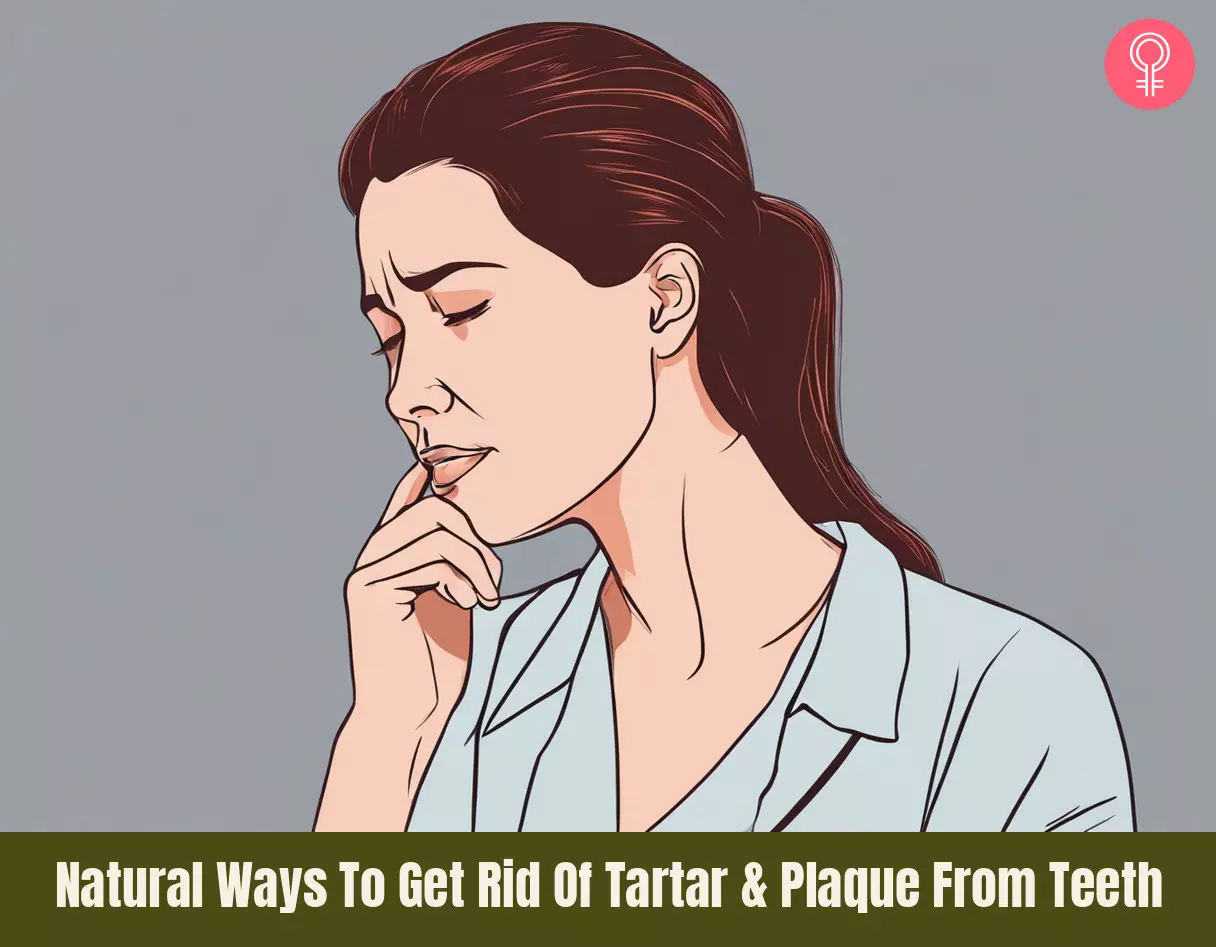
Image: Stable Diffusion/StyleCraze Design Team
References
Articles on StyleCraze are backed by verified information from peer-reviewed and academic research papers, reputed organizations, research institutions, and medical associations to ensure accuracy and relevance. Read our editorial policy to learn more.
- Fluoride and healthy teeth, Paediatrics & Child Health, US National Library of Medicine, National Institutes of Health.
https://www.ncbi.nlm.nih.gov/pmc/articles/PMC2798600/ - Verification of caries inhibition by a tartar control toothpaste, The Journal of Clinical Dentistry, US National Library of Medicine, National Institutes of Health.
https://www.ncbi.nlm.nih.gov/pubmed/14520778 - Triclosan-containing toothpastes reduce plaque and gingivitis, Evidence-based Dentistry, US National Library of Medicine, National Institutes of Health.
https://www.ncbi.nlm.nih.gov/pubmed/16208383 - Antibacterial activity of baking soda, Compendium of Continuing Education in Dentistry, US National Library of Medicine, National Institutes of Health.
https://www.ncbi.nlm.nih.gov/pubmed/12017929 - ALOE VERA: A SHORT REVIEW, Indian Journal of Dermatology, US National Library of Medicine, National Institutes of Health.
https://www.ncbi.nlm.nih.gov/pmc/articles/PMC2763764/ - The influence of chemical composition of commercial lemon essential oils on the growth of Candida strains. Mycopathologia, US National Library of Medicine, National Institutes of Health.
https://www.ncbi.nlm.nih.gov/pubmed/24436010 - Oil pulling for maintaining oral hygiene – A review, Journal of Traditional and Complementary Medicine, US National Library of Medicine, National Institutes of Health.
https://www.ncbi.nlm.nih.gov/pmc/articles/PMC5198813/ - Effectiveness of flossing loops in the control of the gingival health, Journal of Clinical and Experimental Dentistry, US National Library of Medicine, National Institutes of Health.
https://www.ncbi.nlm.nih.gov/pmc/articles/PMC5474330/ - Mouthwashes: Rationale for use., American Journal of Dentistry, US National Library of Medicine, National Institutes of Health.
https://www.ncbi.nlm.nih.gov/pubmed/26591619 - Effect of hydrogen peroxide on developing plaque and gingivitis in man, Journal of Clinical Periodontology, US National Library of Medicine, National Institutes of Health.
https://www.ncbi.nlm.nih.gov/pubmed/379049 - Sanguinaria canadensis: Traditional Medicine, Phytochemical Composition, Biological Activities and Current Uses, MDPI, US National Library of Medicine, National Institutes of Health.
https://www.ncbi.nlm.nih.gov/pmc/articles/PMC5037693/ - Effect of coconut oil in plaque related gingivitis — A preliminary report, Nigerian Medical Journal, US National Library of Medicine, National Institutes of Health.
https://www.ncbi.nlm.nih.gov/pmc/articles/PMC4382606/ - Dental Plaque Dissolving Agents: An In Vitro Study
https://www.researchgate.net/publication/280571976 - Effect of cigarette smoking on the periodontal health status: A comparative, cross sectional study, Indian Society of Periodontology, US National Library of Medicine, National Institutes of Health.
https://www.ncbi.nlm.nih.gov/pmc/articles/PMC3283937/ - The Role of Nutrition in Periodontal Health: An Update, MDPI, US National Library of Medicine, National Institutes of Health.
https://www.ncbi.nlm.nih.gov/pmc/articles/PMC5037517/
Read full bio of Dr. Thomas Connelly
Read full bio of Arshiya Syeda
Read full bio of Dipti Sharma








